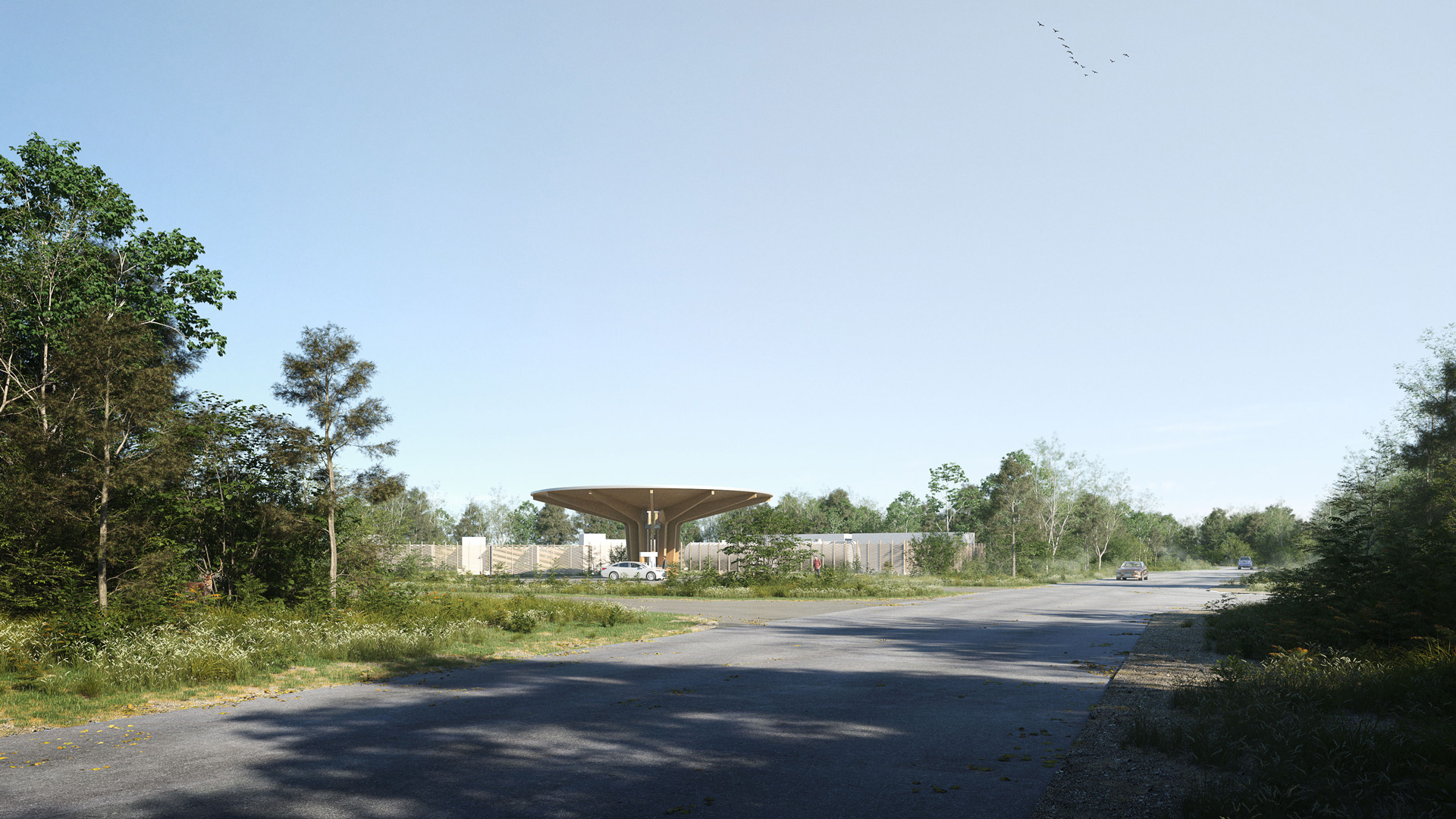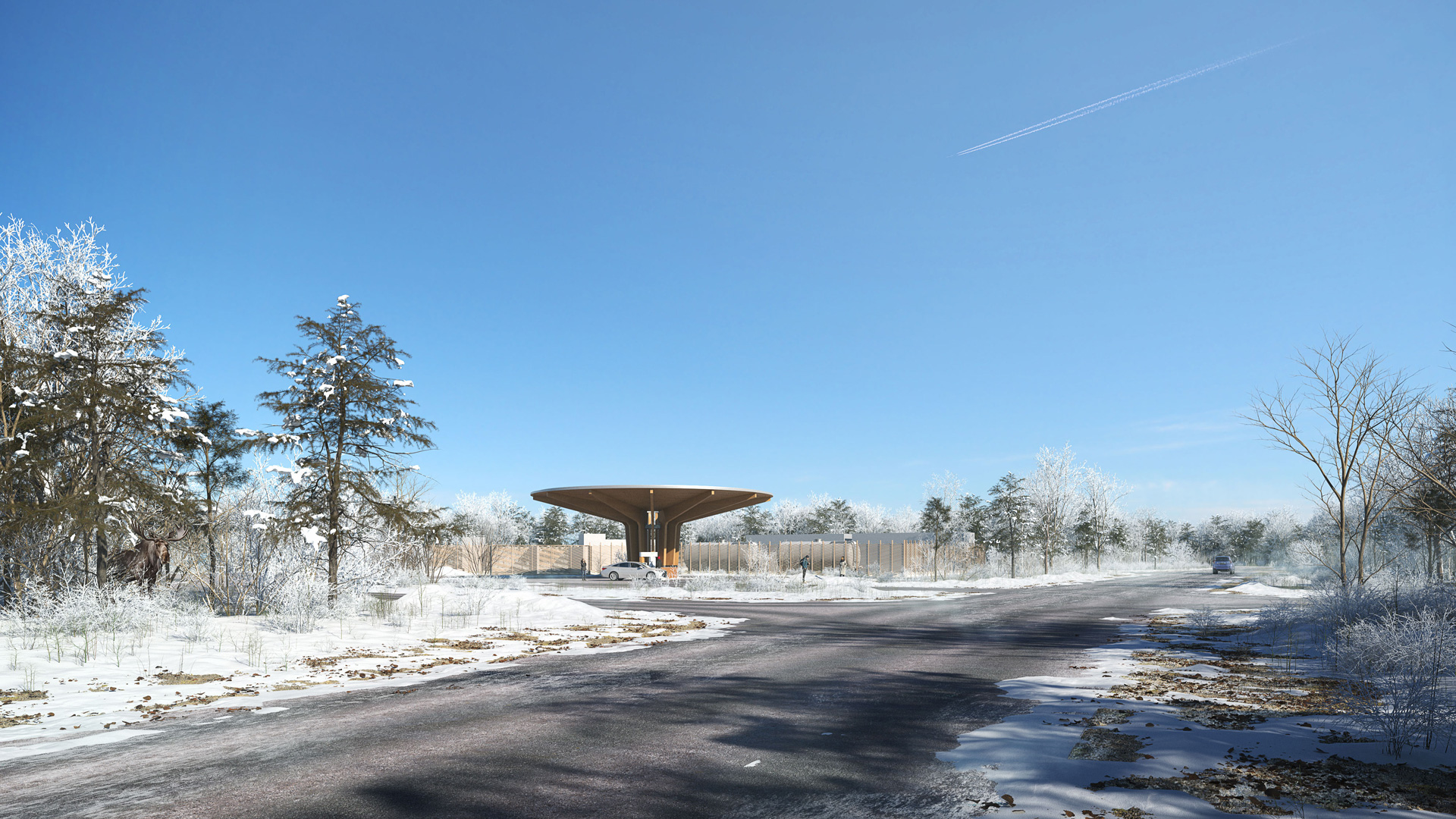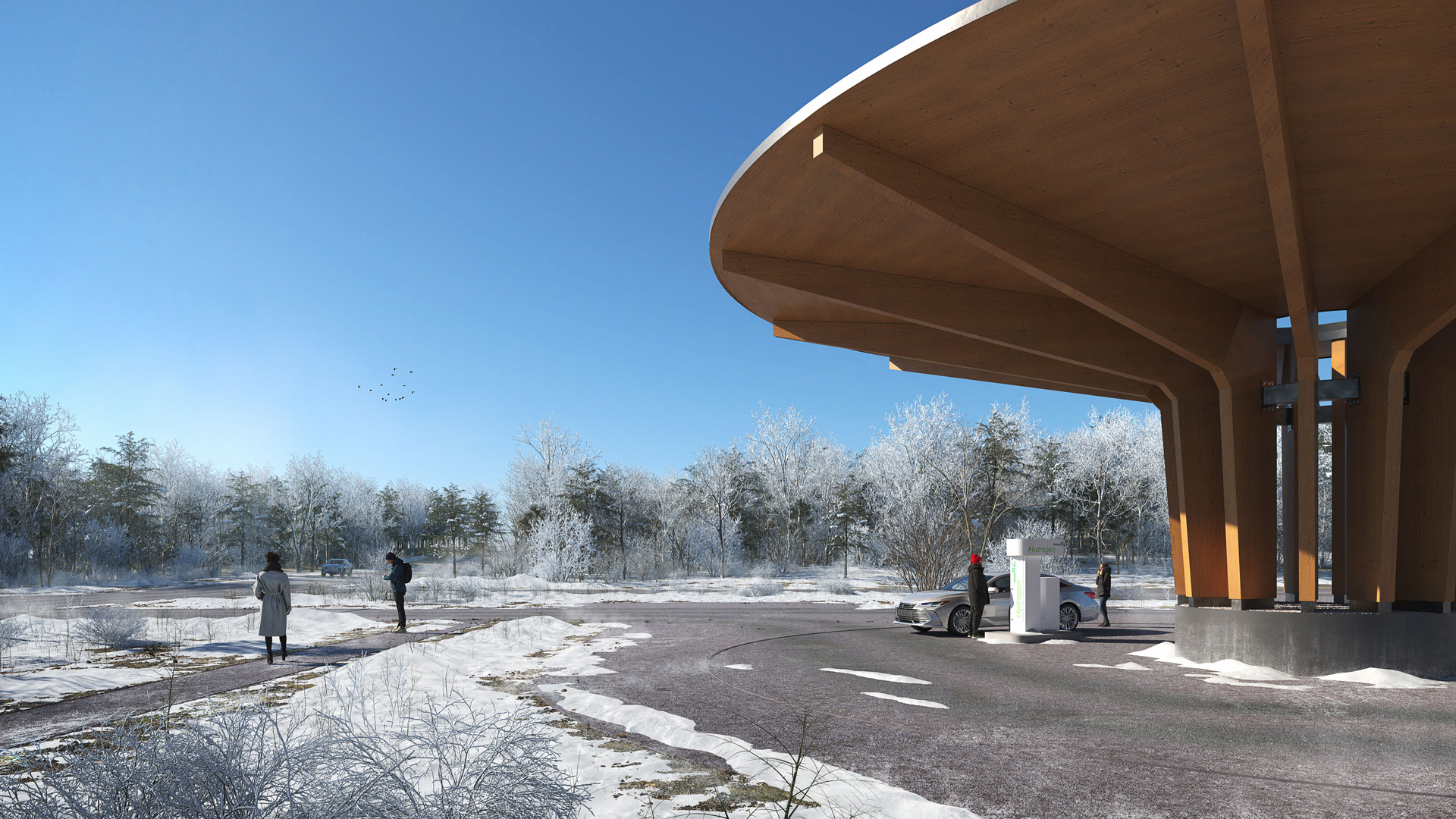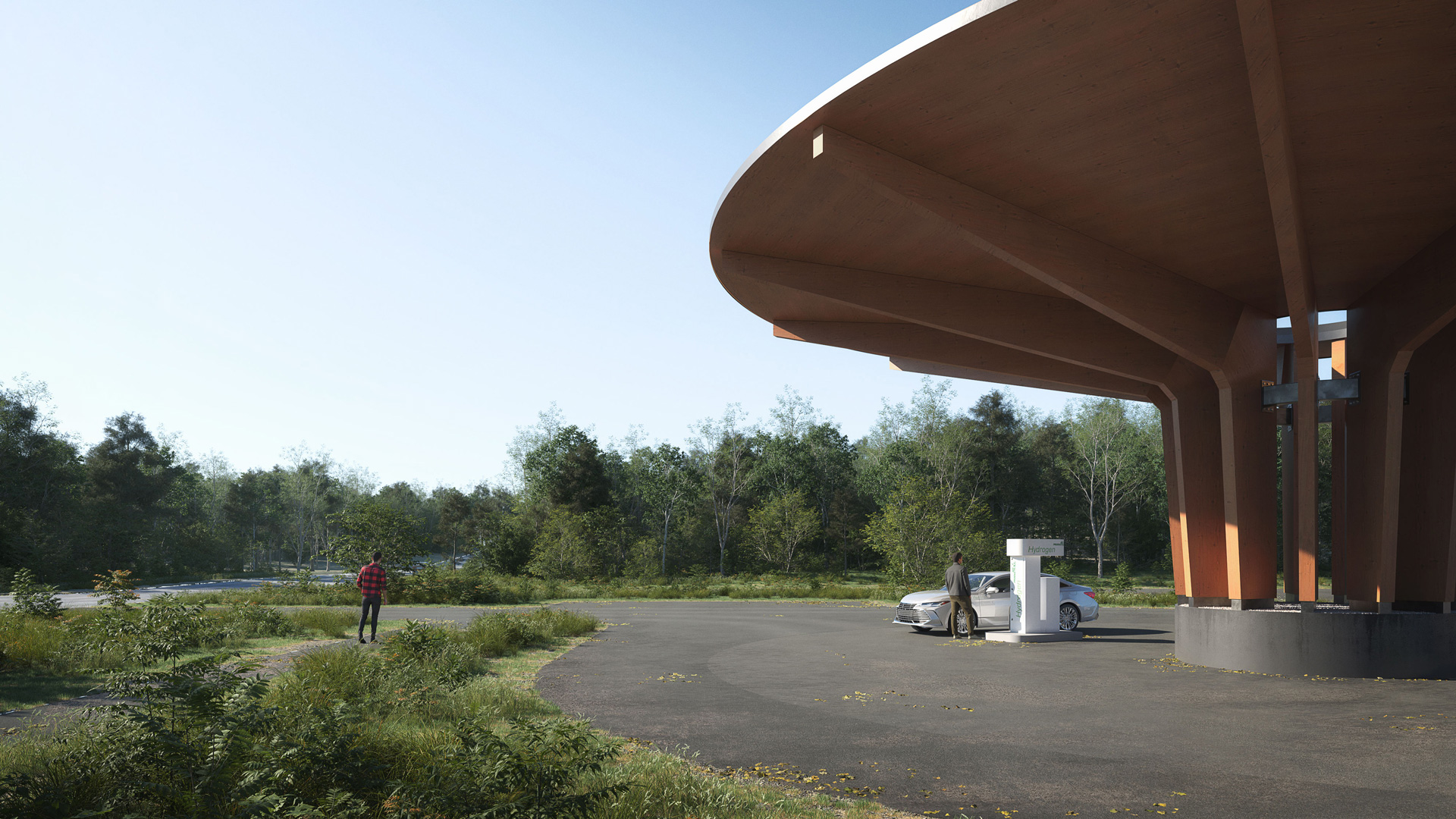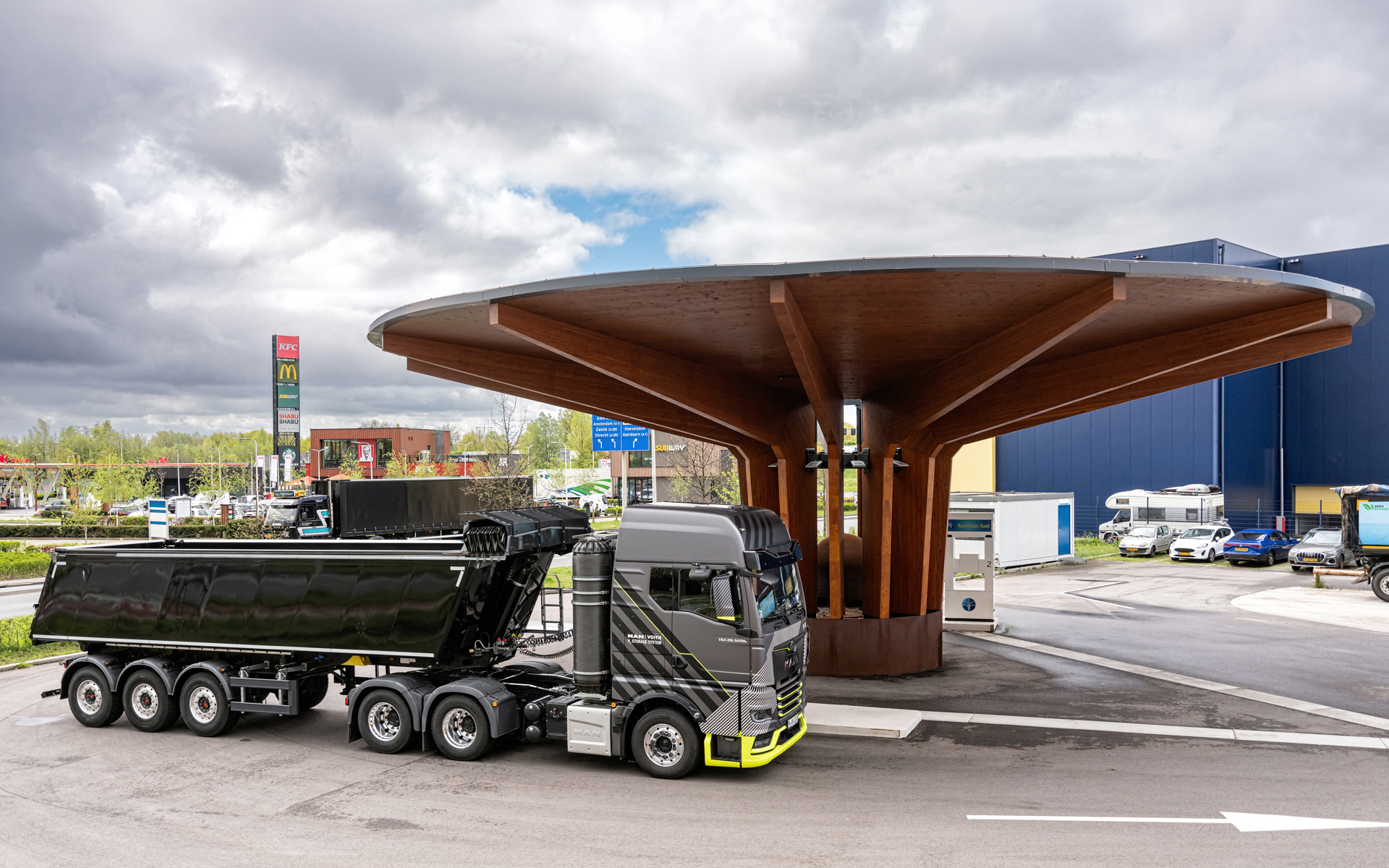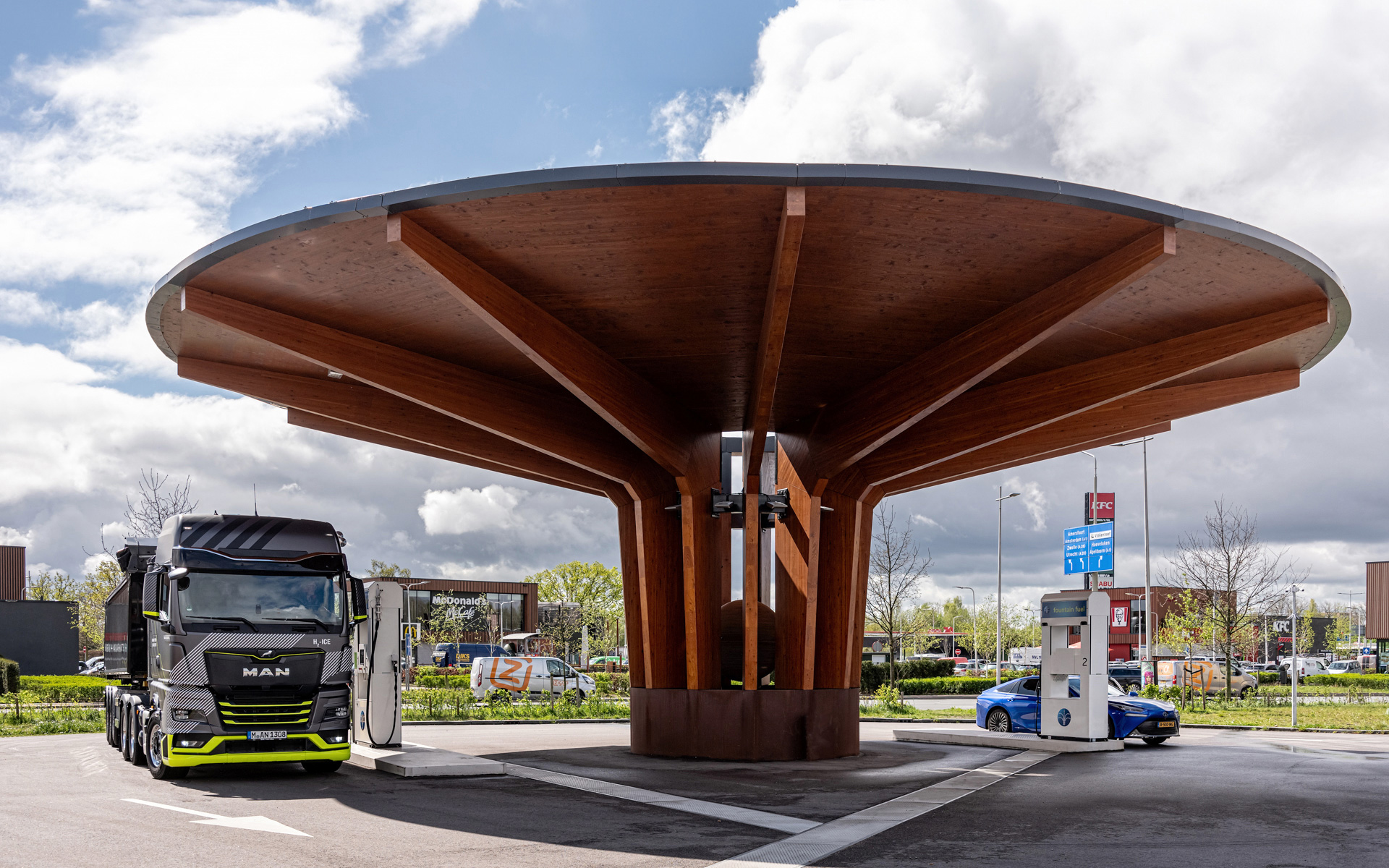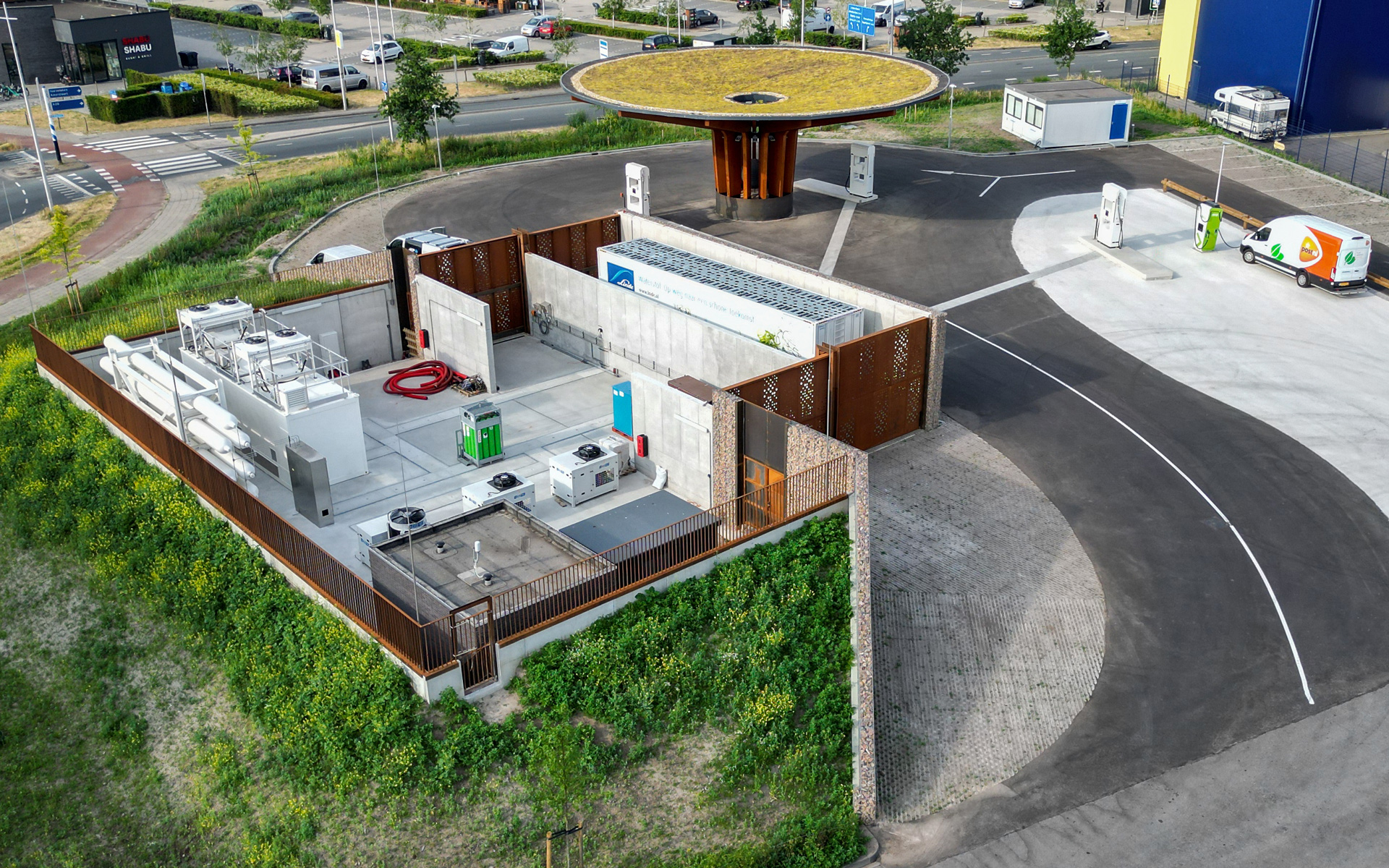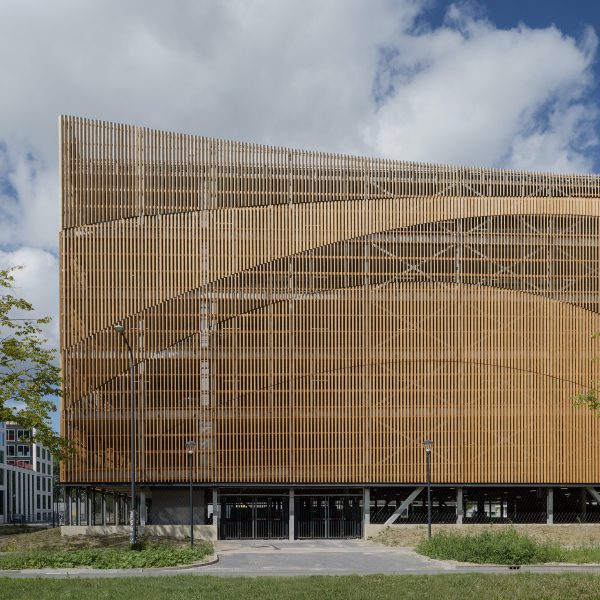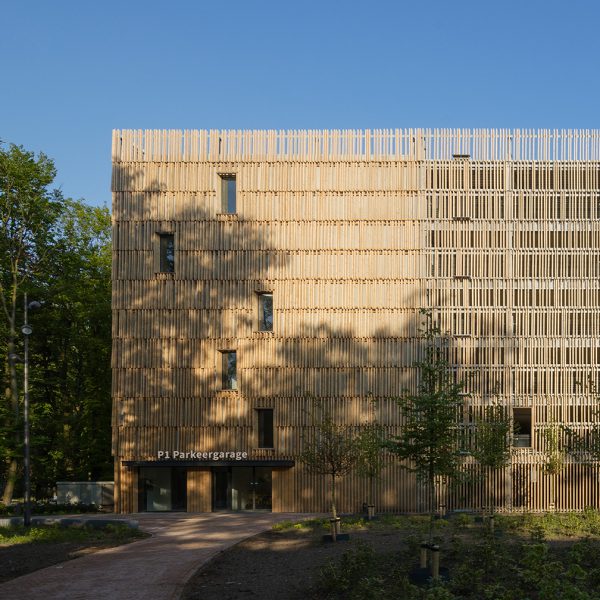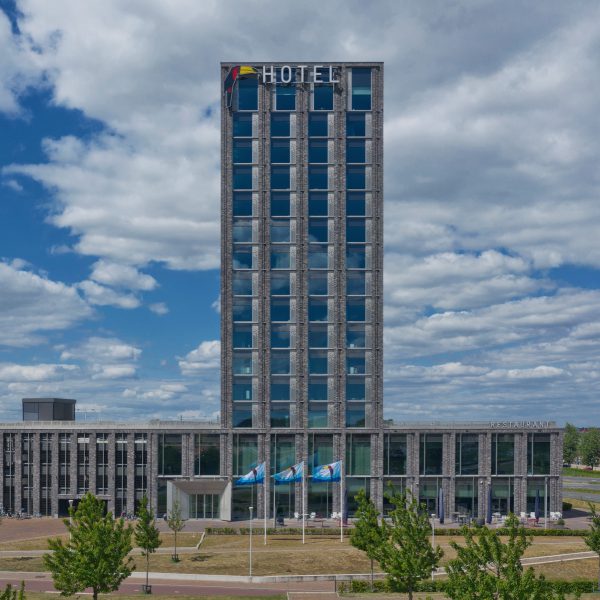Fountain Fuel Zero-Emission Energy Hub
Various locations in Europe
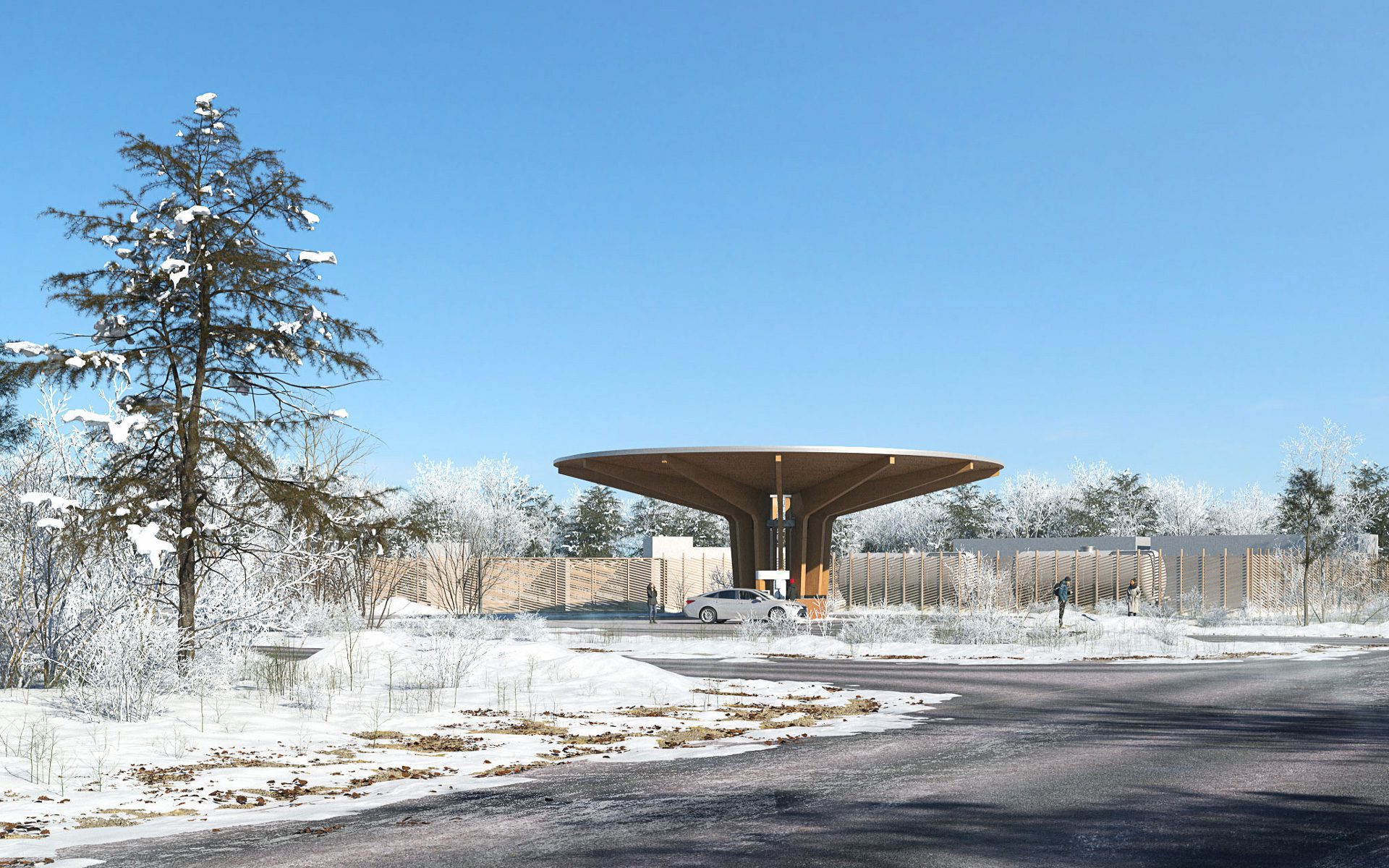
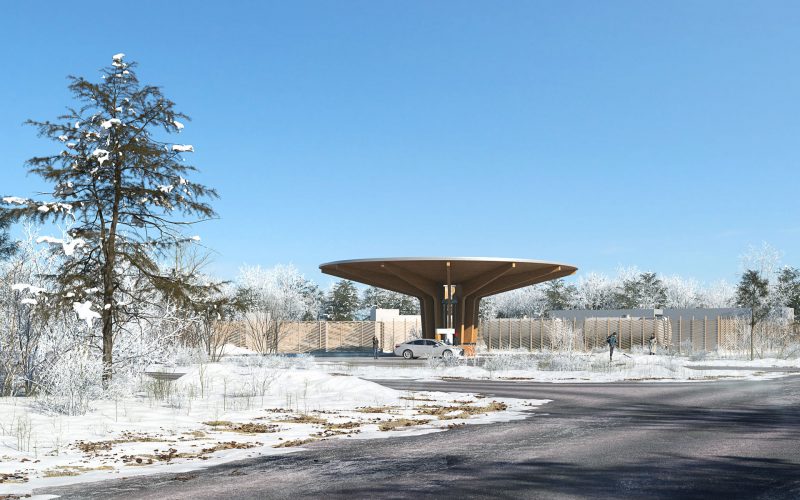
On our way to a
hydrogen-powered future
We all want to move towards a more sustainable future, which means it’s time to get serious about transitioning to renewable, clean energy and ‘zero’ CO2 emission. Hydrogen holds tremendous promise as an alternative fuel source, as vehicles that run on hydrogen gas are sustainable and clean. Fountain Fuel is taking the lead with its zero-emission energy stations for hydrogen fuelling and electric charging, offering all kinds of conveniences for modern commuters.
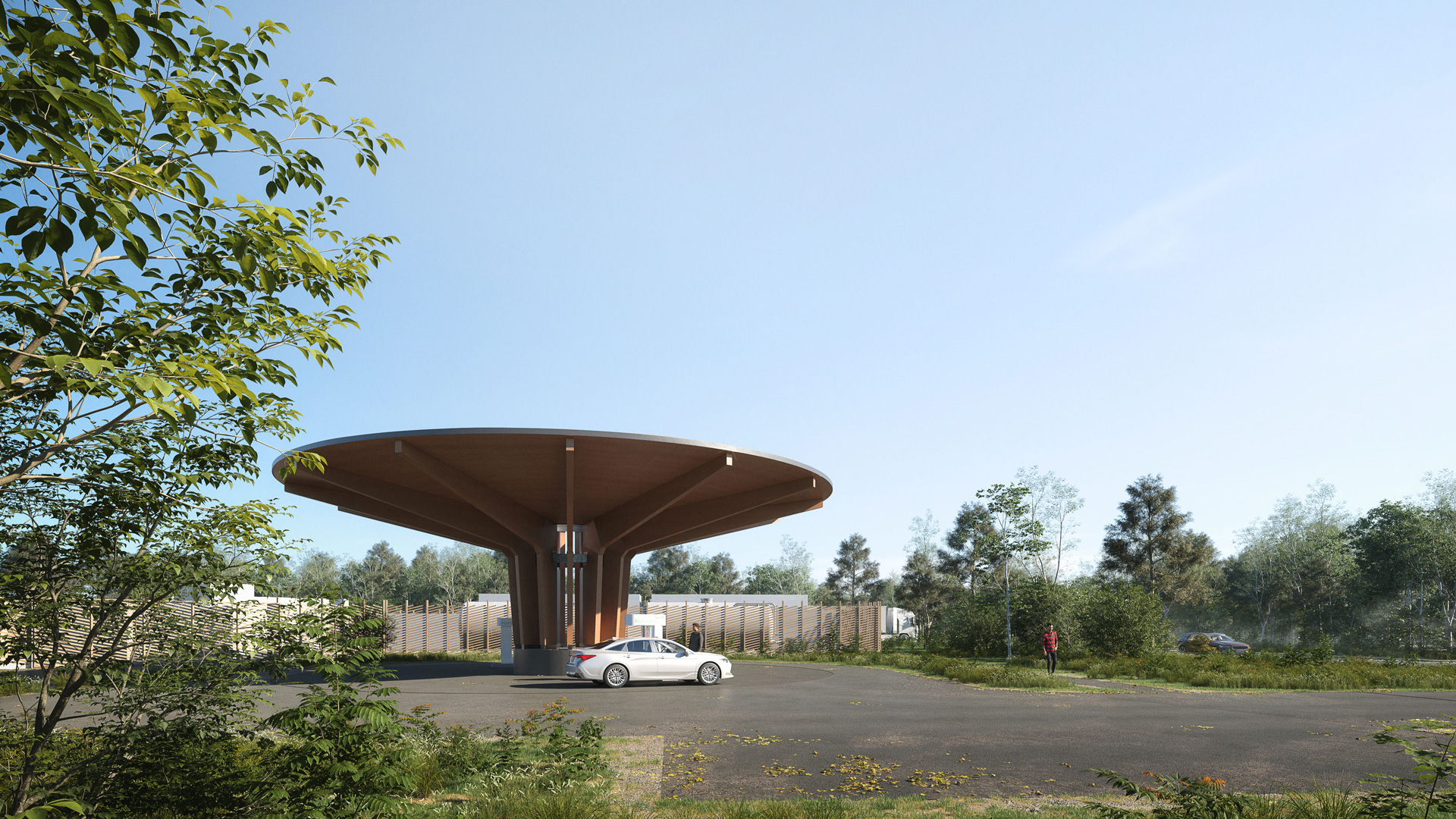
Mobility hubs
Over time, Fountain Fuel stations will be expanded into full-service ‘energy hubs’ for users and vehicles alike, with plenty of room for fuelling and charging, as well as flex-working areas where drivers can work while their car is charging. Additional facilities could include meeting areas, a healthy kiosk, a dry-cleaning service and other conveniences.
Durable, strong and light
Water is the basis for the production of hydrogen fuel, a process which involves extracting hydrogen from water through electrolysis. An awning and mound are required to protect both customers and the hydrogen tank from rainwater; at the same time, however, that water is needed for people and cars. This contrast was the starting point for the design. The station’s elegant round awning, including its supporting structure, is made entirely of wood. Wood is not only durable but also relatively light, which means that it can be transported efficiently in prefabricated parts.
A strong start
The first zero-emission energy station has been built in Amersfoort in the De Wyken industrial park. Then it’s on to Rotterdam, where a second station will be constructed at the airport. Step three is a station on the Waal, near Nijmegen, where clean-energy barges will one day be able to fill up on hydrogen or recharge their batteries. By creating a clear, stylish identity for the project, Wiegerinck has helped Fountain Fuel present itself in an innovative and distinctive way.
Fountain Fuel Amersfoort
“Hydrogen technology is one of the keys to a sustainable world. We have demonstrated that functionality, beauty and durability can go hand in hand when it comes to designing a fuelling and charging station.”
“Hydrogen technology is one of the keys to a sustainable world. We have demonstrated that functionality, beauty and durability can go hand in hand when it comes to designing a fuelling and charging station.”
Project data
- Location
- Various locations in Europe
- Functie
- Hydrogen fuelling station and fast charging station for electric vehicles
- Period
- 2019 – present
- Status
- First energy station completed
- Client
- Fountain Fuel
- Team
- Tim Loeters, Jarno Nillesen, Martijn Akkerman, Ulas Temel, Ruud Hilderink, Maya van der Lande, Simon Wijrdeman, Joris Alofs
- In collaboration with
- Ekinetix, VolkerWessels
- Photography
- Nico Brons (Fountain Fuel/MAN), Bosch Beton


